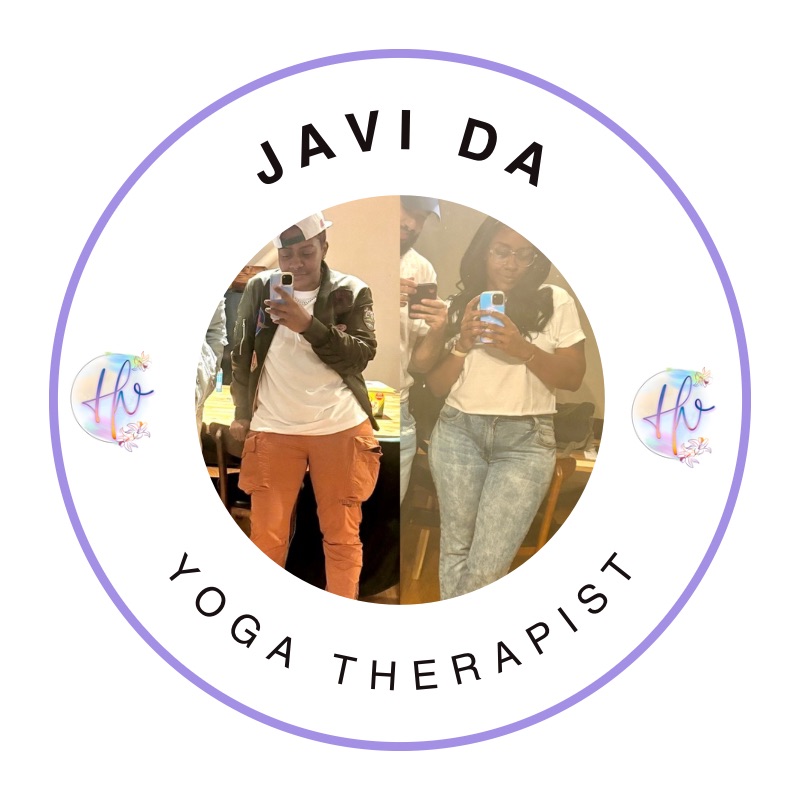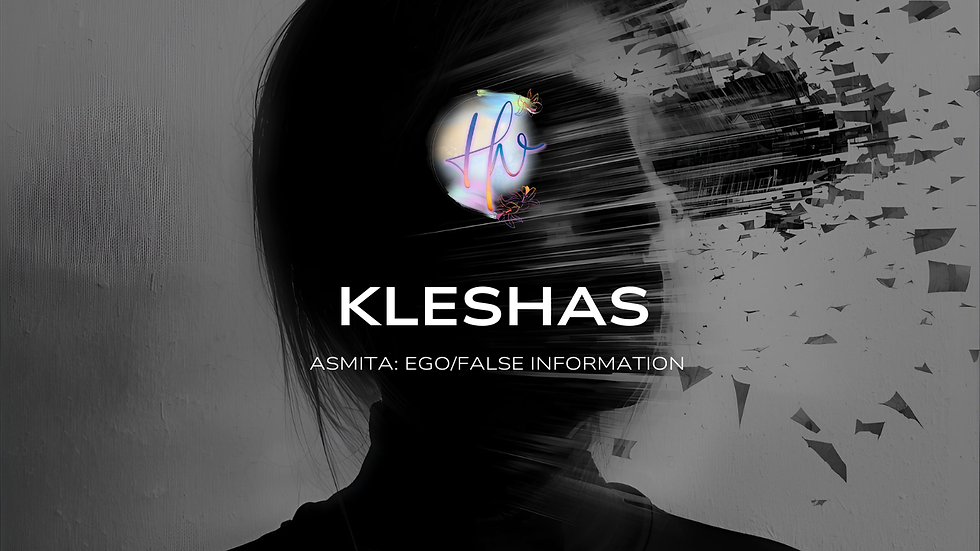Asmita: Release Ego and Connect to Your True Self
- Javi Da Yoga Therapist

- Oct 16
- 2 min read
Understanding Asmita: Yoga Practices to Release Ego and Reconnect with Your True Self
When we over-identify with roles, labels, or self-concepts, the Kleshas distort how we experience life.Asmita, in particular, shapes our perception of “I am this” — the egoic lens through which we see ourselves and the world. Yoga helps us notice these patterns and reclaim clarity, one breath, one pause, one choice at a time.

What Is Asmita?
Asmita is often translated as ego or false identification. It is the sense of “I am this” — the belief that our roles, accomplishments, thoughts, or self-image define who we are.
It isn’t about having a healthy sense of self — Asmita arises when that identification becomes rigid or overbearing.We begin to react from these egoic structures rather than responding from awareness.This misidentification can create stress, tension, comparison, and a sense of limitation.
Yoga invites us to recognize that while identities are part of life, they are not the totality of who we are.
How Asmita Shows Up
Asmita can appear in daily life in subtle or obvious ways:
“I’m only valuable if I succeed.”
“I’m responsible for everyone else’s happiness.”
“I need to prove myself to be loved.”
“I can’t relax — I have to be productive.”
“I am my thoughts, my mistakes, my achievements.”
It often shows up in the body as tension, rigidity, or postural habits that reflect a need to “hold” the self. The nervous system mirrors the mind’s identification patterns — holding, bracing, or over-engaging in defense.
Yoga Therapy Approach to Asmita
Yoga therapy meets Asmita through awareness, embodiment, and gentle reflection.Rather than trying to eliminate the ego, we observe its influence and learn to soften its grip.
A yoga therapist might guide:
Mindful body scanning to notice where tension or rigidity reflects identification.
Grounding practices to connect to the present moment rather than mental constructs.
Breath awareness to create space between thought-driven reactions and conscious choice.
The goal is not to erase the self but to awaken a flexible, present, and compassionate relationship with it.
Three Days to Work with Asmita
Day 1: Notice Ego-Driven Reactions
Pay attention when you feel defensive, proud, or anxious.Ask: “Am I reacting from this identity, or from presence?”✨ Mini Action: Take three deep breaths and simply observe the reaction.
Day 2: Observe Identity Attachments
Identify one role or label that dominated your day — teacher, parent, provider, healer.Ask: “Does this role empower me or restrict me?”✨ Mini Action: Whisper: “I am more than this role.”
Day 3: Soften the Ego’s Hold
Notice moments of comparison, judgment, or self-criticism.Ask: “Can I meet this with curiosity rather than defense?”✨ Mini Action: Exhale tension with the affirmation: “I am present beyond my ego.”
Closing Reflection
Asmita isn’t a flaw — it’s part of being human. Through awareness, breath, and embodiment, we learn to see where identification limits us and how to respond with presence. Clarity unfolds as we practice observing rather than reacting, softening the grip of the ego one moment at a time.
🌿 This week’s paid practice inside the full Kleshas program guides you through an embodied meditation and yoga therapy sequence to release egoic tension and reconnect with your authentic self.




Comments